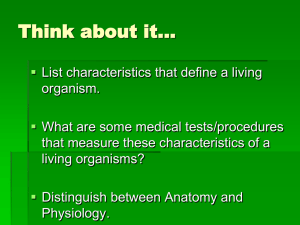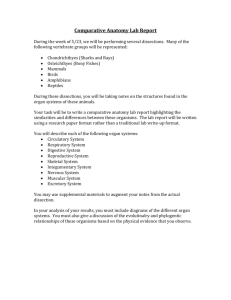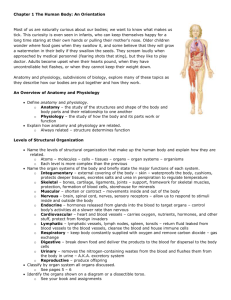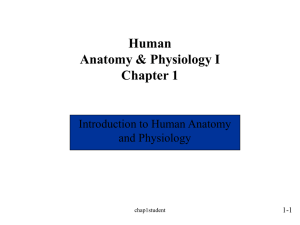Levels of Organization and Organ Systems
advertisement
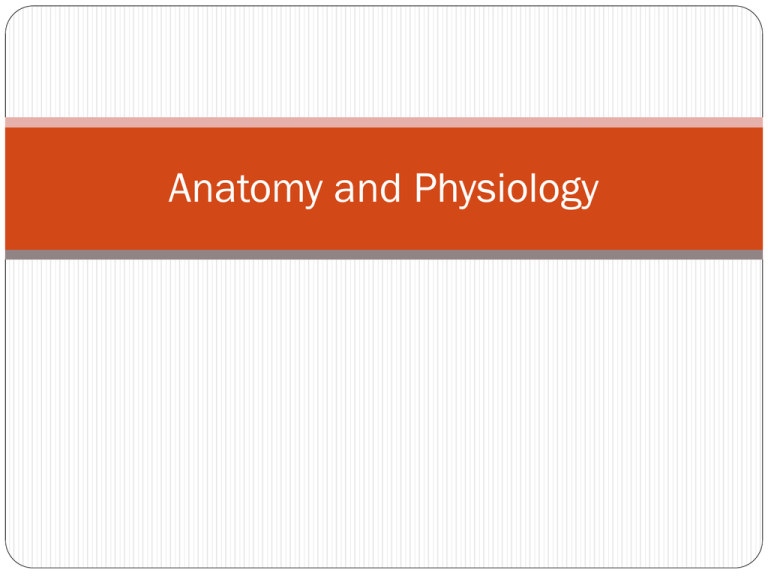
Anatomy and Physiology Anatomy and Physiology Turn to a neighbor and talk about: What you think you will learn about in this class The definition of anatomy The definition of physiology Biology Study of life Requirements: 1. Water 2. Food 3. Oxygen 4. Heat 5. Pressure Functions: 1. Responsiveness 2. Growth 3. Reproduction 4. Movement 5. Metabolism (Respiration, Digestion, Excretion, etc.) Anatomy “a cutting open” in Greek Studies the field of structure (morphology) Physiology Studies the performance or function Anatomy and Physiology “Form and Function” Levels of Organization and Organ Systems Levels of Organization 1. 2. 3. 4. 5. 6. Chemical/Molecular Cellular Tissue – cells performing specific function Organ – tissues performing specific function Organ System Organism How many organ systems can you name? Organ Systems 1. 2. 3. 4. 5. 6. 7. 8. 9. 10. 11. Integumentary Skeletal Muscle Nervous Endocrine Cardiovascular Lymphatic Respiratory Digestive Urinary Reproductive (male and female) Integumentary Epidermis (skin), hair, nails Protects against environmental hazards, controls body temp Skeletal System Bones, cartilage Provides support, protects tissues, stores minerals, forms blood Muscular System Muscles, tendons Allows locomotion, provides support, produces heat Nervous System Nerves, brain, spinal cord Directs immediate response to stimuli, usually coordinates activities of other systems Endocrine System Glands Directs long-term changes in activities of other organ systems Cardiovascular System Heart, blood vessels, blood Transports cells and dissolved materials (nutrients, wastes, gases) Lymphatic System Lymphatic vessels and nodes, spleen, thymus Defends against infection and disease, returns tissue fluid to bloodstream Respiratory System Nasal cavities, pharynx, larynx, trachea, bronchi, lungs Delivers air to sites where gas exchange can occur between the air and circulating blood Digestive System Salivary glands, pharynx, esophagus, stomach, intestine, liver, gallbladder, pancreas Processes food and absorbs nutrients Urinary System Kidneys, ureters, urinary bladder, urethra Eliminates excess water, salts and waste products Reproductive System Male: testes, accessory organs, external genitalia (penis, scrotum) Female: ovaries, uterine tubes, uterus, vagina, external genitalia (clitoris, labia), mammary glands Produces sex cells and hormones Homework Coloring Workbook – Chapter 1 Numbers 3-7 and #20 Cross off #9 – we will not be doing that question An Introduction to Anatomy and Physiology – Chapter 1 Objectives 1-4

